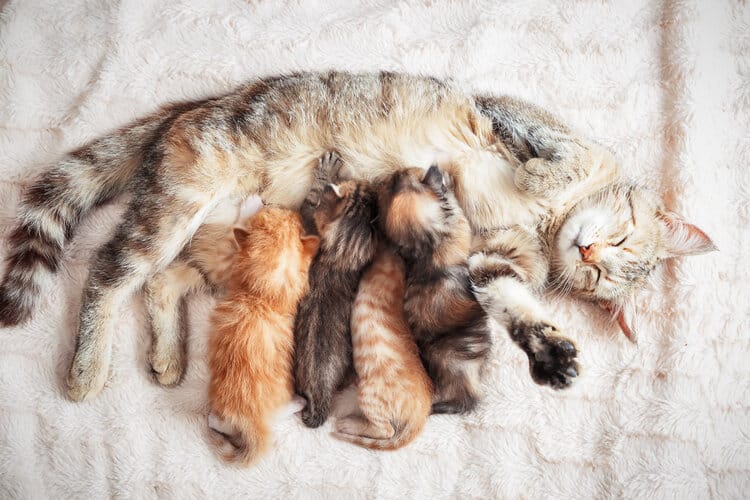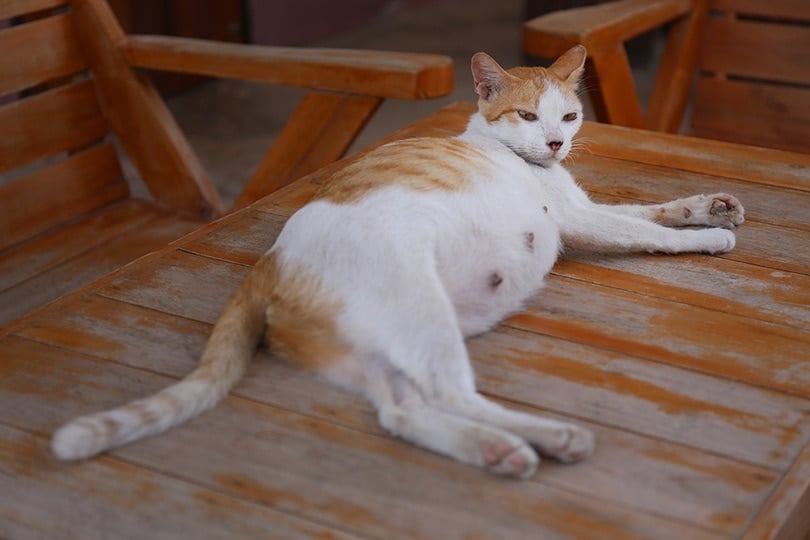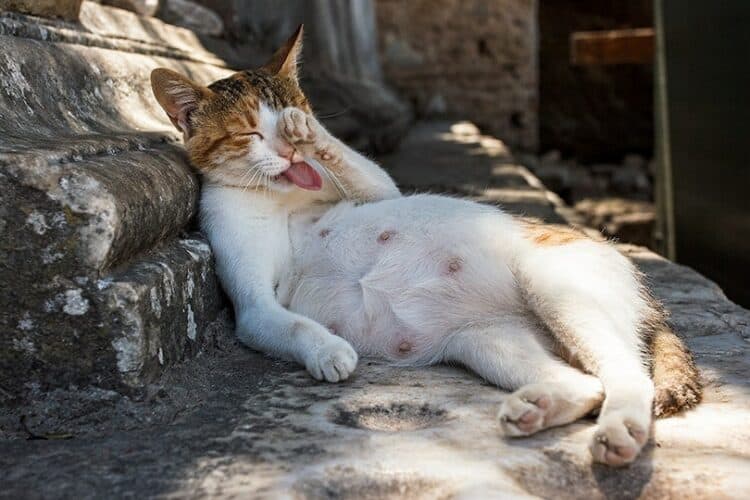If your cat is pregnant, it makes sense to wonder how long she’ll be in labor. Usually, cats are in labor for 6–12 hours from when she starts having contractions to the afterbirth phase.
Cat labor goes through three different stages, similar to human labor. Thankfully, cats have been giving birth for a long time, so they’re pretty independent in this area. Still, it never hurts to offer a little help, especially for first-time cat moms!
Keep reading as we answer your questions about cat labor and how you can help your cat deliver her kittens.
How Many Kittens Can a Cat Have?
Cats generally have between three and five kittens, with some cats having as many as 10 kittens!
You probably won’t need to plan for your cat to have 10 kittens. On average, cats stay within the three to five kittens per litter range, so it’s best to plan around this number while still having a little wiggle room.
It’s possible for a cat to only have one kitten, especially if it’s her first time giving birth. Sometimes, only one kitten will form during the first pregnancy of a young cat. It’s by no means abnormal. As long as your cat is healthy, it’s okay for her to have one kitten.

How to Prepare for Kittens
Preparing for kittens can be a fun experience. This is when you get to set up the birthing area. The birthing area provides a safe, warm, stress-free environment for your new mama cat to welcome her babies into the world. It’s where all the birthing supplies will be so you can help her through all her hard work.
To set up a birthing area, you’ll need:
- A safe, secluded area
- Towels (different sizes)
- Thermometer
- Newspaper
- A source of heat
- A box or another large container
- Kennel
You can use almost anything to create the birthing box. All that matters is your cat feels comfortable and safe. She’ll probably select the spot herself days or weeks leading up to the birth.
Have a kennel ready to go if you need to take your cat to the vet. It’s a good idea to be prepared if there are any labor complications, which we will get to in just a minute.
Before we do, let’s look at the signs of cat labor.
Signs of Cat Labor
Around day 58 of her pregnancy, you want to watch your cat as her time for labor approaches. She could give birth any day, so make sure all the supplies are ready to go.
Some labor signs to look out for include:
- Nesting, or frequent visits to a particular spot
- Vocalizations
- Pacing
- Mammary glands grow and become visible
- Increased grooming
- Decreased appetite
- Drop in rectal temperature

Cat Labor Stages
Stage One: Contractions begin in this stage and the cervix relaxes and dilates. Your cat will show obvious signs of discomfort at this point. You may even notice the kittens moving around in her womb. Cats will often seek reassurance from the owner and become affectionate.
Stage Two: This is where your cat does most of the hard work. Your cat will experience strong uterine contractions that lead to birth. Kittens can come out head first or feet first, and the outer layer of the membrane will appear briefly at the vulva. Delivery of a kitten can take anywhere from 5–30 minutes.
Stage Three: Stage three is the afterbirth stage. The afterbirth will be a greenish-black color and shouldn’t have a foul odor.
How Long Between Each Kitten?
Intervals between each kitten will take anywhere from 10 minutes to 1 hour. Your cat may rest between birthing each kitten, also known as interrupted labor.
During this time, she may suckle the already birthed kittens and even eat, drink, and move around. It’s not uncommon for some cats to rest for several hours before resuming the birthing process.
As long as your cat is relaxed, you shouldn’t have anything to worry about. Still, watch your cat closely during this time for any birthing complications.

Cat Labor Complications
Most cats don’t need our intervention when they give birth, but labor complications sometimes happen. You should seek veterinary help immediately if:
- Your cat endures 20 minutes of intense labor and does not produce a kitten.
- Your cat endures 10 minutes of intense labor and does not expel a kitten that can be seen at her vulva.
- Your cat loses fresh blood from her vulva for more than 10 minutes. Pulling gently on a trapped kitten causes your cat pain.
- Your cat appears to be depressed, lethargic, or has a fever.
Take your cat to an emergency room for observation and intervention if you notice any of these signs. Call your veterinary emergency hospital to let them know you’re coming so they can prepare.
Conclusion
Animal birth is a wonderful experience and something that many cat owners love to be a part of. Granted, it’s not the cleanest moment, and you may be nervous about your cat’s well-being. Thankfully, cats have been giving birth for thousands of years. Your cat will listen to her instincts and do whatever she feels is necessary.
She may need your help at some point, especially if it’s her first time giving birth. Have all the above materials ready to make the next 6–12 hours of labor as easy as possible.
Thank goodness your cat has you to help and comfort her! Good luck!
Featured Image Credit: Lenar Musin, Shutterstock














